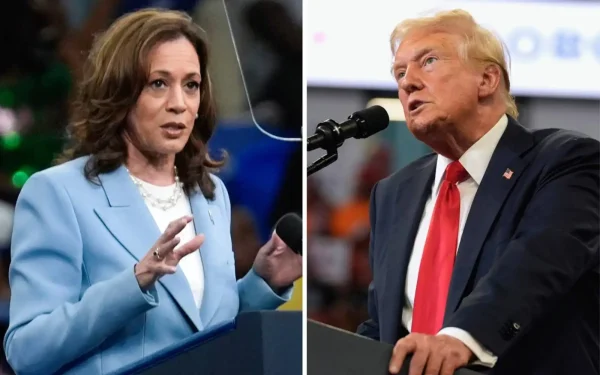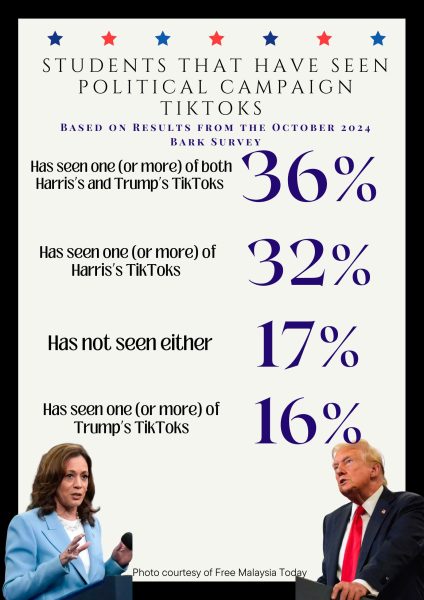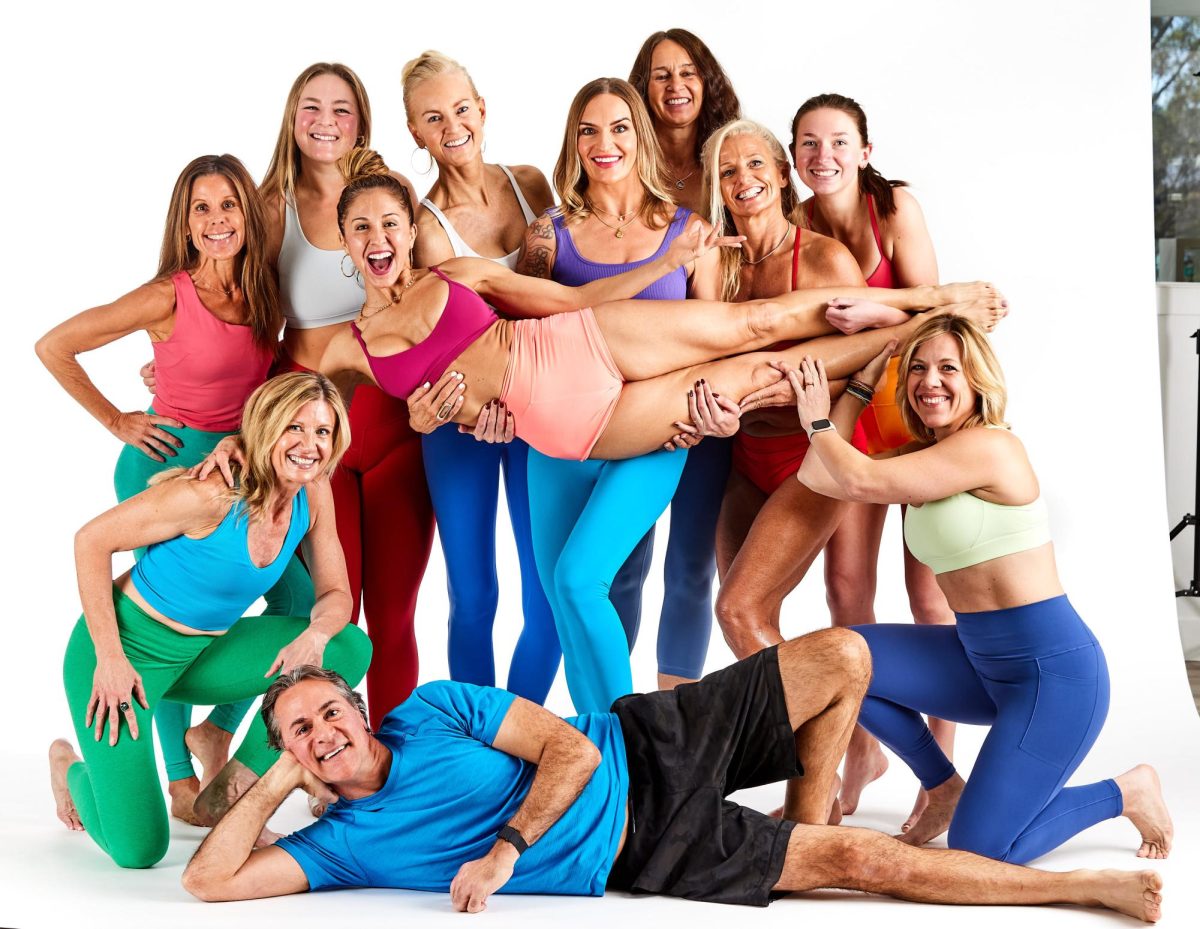
Young voters have become increasingly impactful in this election, and presidential candidates have turned to social media platforms like TikTok to reach this generation. Strategically, both Former President Donald Trump’s and Vice President Kamala Harris’s campaigns have bought into relevant trends on social media, either shading their opponent or promoting themselves. Candidates have also been targeting younger voters through collaborations with popular influencers; Harris appeared on “Call Her Daddy”, along with a slew of other podcasts, and Trump engaged with influencers like Adin Ross and Logan Paul that have followers of primarily younger generations. By posting clips of these interviews, Harris and Trump have funneled their viewers to watch these interviews, furthering their appeal to younger generations by demonstrating their commitment to engaging in issues that relate and resonate strongly with a younger demographic. According to an October Bark survey, 36 percent of students have seen both a Harris and Trump campaign video on TikTok, a testament to the candidates’ success in reaching younger audiences.

Harris’s TikTok
Harris’s social media team, with the TikTok username @kamalahq, has reached a huge audience, accumulating nearly 200 million likes in these recent
campaigning months. While some of Harris’s videos simplify complicated policies to educate young voters, others use humor and trending video formats to highlight Trump’s perceived flaws. Their team’s strategy of inspiring an inclusive environment is what separates Harris’s TikTok style from Trump’s. By using personal stories from supporters, Harris’s team reaches the audience on a personal level, allowing viewers to relate to content and be more vulnerable when watching their videos.
Trump’s TikTok
On TikTok as @teamtrump, Trump’s social media presence employs a different strategy to engage young voters. While he too aims to foster a sense of community, his content mostly prioritizes self-affirmation over critiquing Harris. Trump’s page is filled with videos from his speeches and debates, strategically created to present him as a knowledgeable and well-articulated leader. While Harris uses personal anecdotes to inspire connection among voters, Trump uses clips from his events with high energy to amplify the enthusiasm of his campaign. This approach reinforces his narrative of being a true leader, but it also instills a sense of belonging within his followers, making them a part of a larger movement.

So, next time you are scrolling through a social media platform, be sure to check out Harris’s and Trump’s accounts. No matter your stance on the election, watching these videos will facilitate a well-rounded perspective on their personalities, policies and overall values. As you engage with this content, be mindful of how various platforms shape political conversations; anything from simplifying policies to self-promotion is aimed at promoting candidates, which can involve inherent bias.








